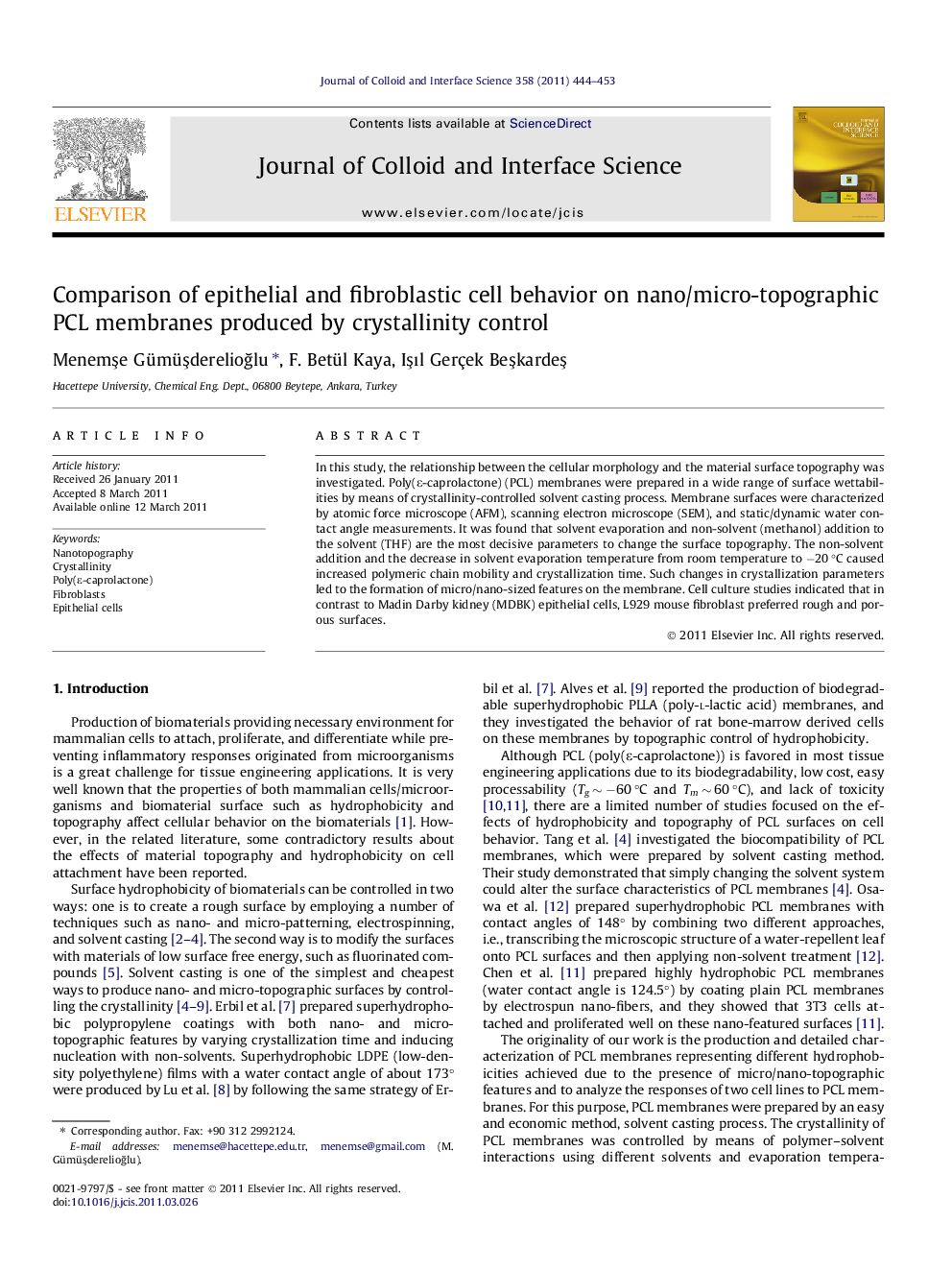| Article ID | Journal | Published Year | Pages | File Type |
|---|---|---|---|---|
| 608594 | Journal of Colloid and Interface Science | 2011 | 10 Pages |
In this study, the relationship between the cellular morphology and the material surface topography was investigated. Poly(ε-caprolactone) (PCL) membranes were prepared in a wide range of surface wettabilities by means of crystallinity-controlled solvent casting process. Membrane surfaces were characterized by atomic force microscope (AFM), scanning electron microscope (SEM), and static/dynamic water contact angle measurements. It was found that solvent evaporation and non-solvent (methanol) addition to the solvent (THF) are the most decisive parameters to change the surface topography. The non-solvent addition and the decrease in solvent evaporation temperature from room temperature to −20 °C caused increased polymeric chain mobility and crystallization time. Such changes in crystallization parameters led to the formation of micro/nano-sized features on the membrane. Cell culture studies indicated that in contrast to Madin Darby kidney (MDBK) epithelial cells, L929 mouse fibroblast preferred rough and porous surfaces.
Graphical abstractPCL membrane prepared by methanol/THF mixture and dried at room temperature: (a) SEM image and (b) AFM image. (c) Fibroblastic L929 cells and (d) epithelial MDBK cells on the membranes.Figure optionsDownload full-size imageDownload high-quality image (158 K)Download as PowerPoint slideHighlights► PCL membranes were fabricated by crystallinity-controlled solvent casting process. ► Drying temperature and presence of non-solvent were the key parameters in casting process. ► Cellular responses of fibroblasts and epithelial cells to membrane topography were investigated. ► L929 fibroblasts were more sensitive to surface topology than MDBK epithelial cells.
